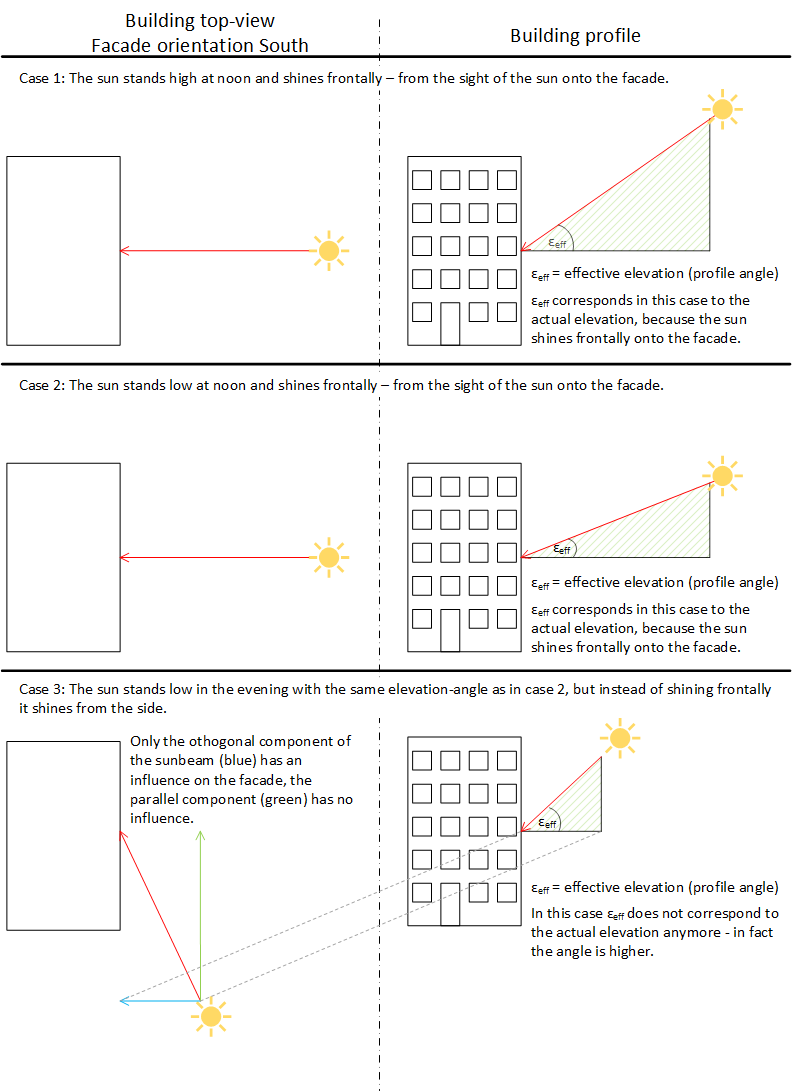Effective elevation angle
This chapter describes the relationship between the incidence of sunlight on the facade and the elevation angle.

Case 1 shows a typical incidence of sunlight on a south-facing facade at midday.
The sun is high compared to the morning and evening.
The green shaded triangle represents the elevation angle ԑ.
Seen from the direction of the sun (azimuth), only the orthogonal component has a direct effect on the facade!
In this case, the elevation angle ԑ is therefore equal to the effective elevation angle ԑeff or the profile angle for the calculation.
Case 2 shows a typical incidence of sunlight at midday on a south-facing facade, but lower.
The green shaded triangle represents the elevation angle ԑ, which is smaller compared to case 1.
Here too, the elevation angle ԑ is equal to the effective elevation angle ԑeff or the profile angle for the calculation.
Case 3 shows a typical incidence of sunlight on a south-facing facade in the evening. The elevation angle is the same as in case 2, so case 3 is the continuation of case 1 on the same day.
The green shaded triangle from case 2 (building in profile) is now tilted forwards.
However, it represents the orthogonal lighting component. The elevation angle for this component is visibly larger than in case 2, where the sun shines orthogonally onto the facade.